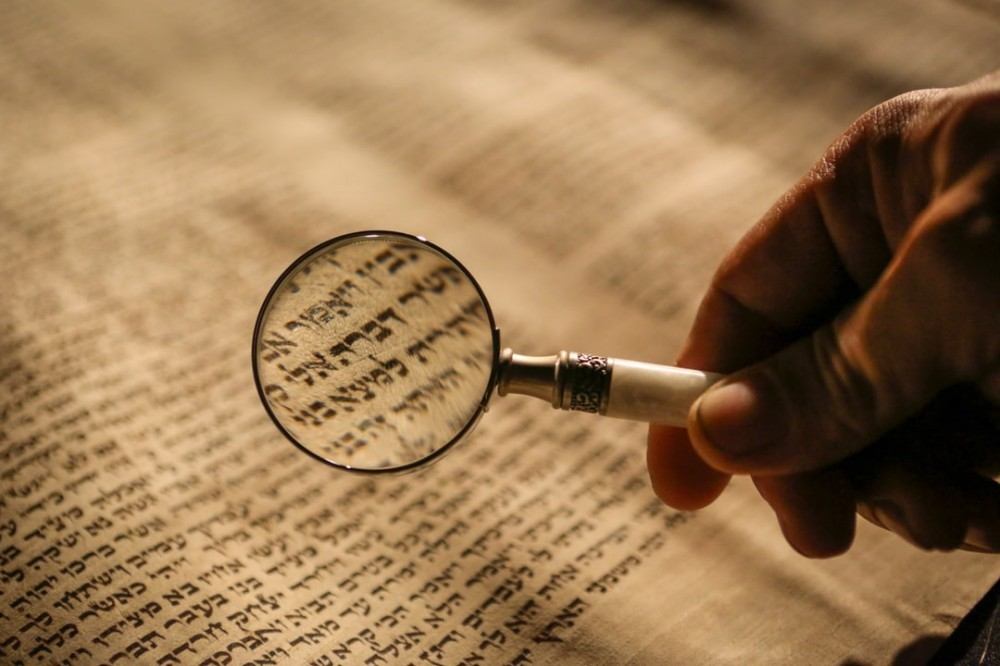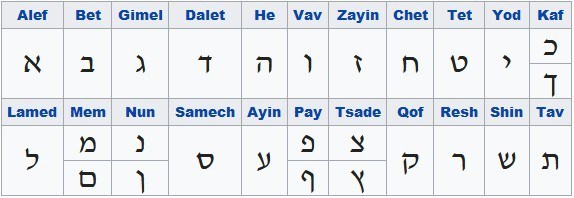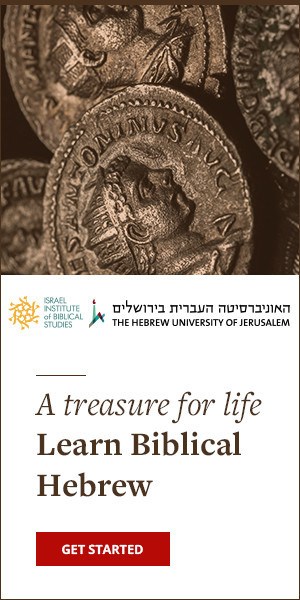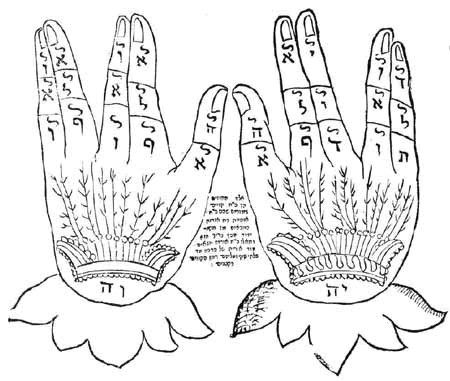 Hebrew is not just for Bible or Jewish studies scholars. It turns out the letters of the Hebrew alphabet actually have much to say about the patterns that govern creation—both natural and human. The Hebrew alphabet meanings, symbols are relevant to Christians, too, as they represent and refine the understanding of God, the cosmos, and our role in all of it. Hebrew mysticism is a worthwhile study for both theologians and philosophers.
Hebrew is not just for Bible or Jewish studies scholars. It turns out the letters of the Hebrew alphabet actually have much to say about the patterns that govern creation—both natural and human. The Hebrew alphabet meanings, symbols are relevant to Christians, too, as they represent and refine the understanding of God, the cosmos, and our role in all of it. Hebrew mysticism is a worthwhile study for both theologians and philosophers.
Origins of the Biblical Hebrew Alphabet
 To be precise, there are actually 2 Hebrew alphabets—the Paleo-Hebrew or Ketav Ivri, and the Imperial Aramaic or Ketav Ashuri. The Paleo-Hebrew uses the Phoenician alphabet, which was commonly used throughout the Semitic world during the 2nd millennium B.C. Aramaic became the dominant alphabet and language of the Semitic world during the 1st millennium B.C., and the Imperial Aramaic alphabet came into use for Hebrew scribes after the Babylonian invasion of Israel.
To be precise, there are actually 2 Hebrew alphabets—the Paleo-Hebrew or Ketav Ivri, and the Imperial Aramaic or Ketav Ashuri. The Paleo-Hebrew uses the Phoenician alphabet, which was commonly used throughout the Semitic world during the 2nd millennium B.C. Aramaic became the dominant alphabet and language of the Semitic world during the 1st millennium B.C., and the Imperial Aramaic alphabet came into use for Hebrew scribes after the Babylonian invasion of Israel.
[If you want to know more about Hebrew language, read here my article on this topic.]
All Semitic languages—Phoenician, Hebrew, Aramaic, Arabic, and Syriac—have commonalities of alphabet, word and sentence structure, and pronunciation. The most obvious similarity is that they are all read from right to left. (Most modern Westerners would experience this as backwards.)
The ancient peoples who used these Semitic languages migrated throughout the Middle East, were conquered by one another, and traded with one another, to the point that they have a shared heritage: It gets difficult to definitively distinguish one people, culture, or language from another. There was a sharing of philosophical ideas and religious concepts: The symbols that make the Semitic alphabet are based on these shared concepts.
Development of the Hebrew Alphabet
The Hebrew alphabet is composed of 22 consonant letters—Semitic alphabets do not have specialized vowel letters. Originally, there were no marks to designate vowel sounds, or to indicate long, short, hard, or soft pronunciations. During the Middle Ages, the Masoretes (a group of Jewish scholars) added various marks to the Hebrew alphabet, and they began the use of some Hebrew letters as vowels, which could be added to traditional consonant words as pronunciation guides.
One type of mark is the Dagesh—a dot placed inside the form of a letter. Dagesh can designate pronunciation alternatives or just be a part of spelling, depending on the letter and context. Niqqud—formations of points/dots, and sometimes lines, positioned above or below a letter—indicate particular pronunciations and vowel usages.
In the late 1800s, the Zionist movement arose in central-eastern Europe in reaction to growing anti-Semitism. Zionists championed the idea of a Jewish state, a Modern Israel, where Jewish people could have a homeland and speak a native language. Unfortunately, there were many challenges involved in achieving this, one of which was the dissolution of Hebrew language as the Jewish people had dispersed.
Jews living in Eastern Europe had developed a sort of hybrid language, called Yiddish, which borrows from German and other European languages, but uses the Hebrew alphabet. Zionist linguists began developing a standardized Jewish language (Modern Hebrew) and methods to help Israelis become fluent.
The Role of Letters in Kabbalah

Hebrew letters are used for spelling, phonetics, and as numbers. However, Kabbalist Jews also consider Hebrew alphabet meanings symbols of whole ideas. Kabbalah is a sect of mystic Judaism, originating among Hasidic Jews in the Middle Ages, that considers spirituality, theology, philosophy, cosmology, and even mathematics to be unified under one God-given reality.
Kabbalists see connections between persistent concepts throughout nature and patterns in the text of the Torah as special and truth-giving. Similarly, they find meaning in the number represented by a word’s spelling, the placement and frequency of certain letters in text, the very configurations of the Aramaic letters, and any connections or relationships they can discern between all of these.
 The term Kabbalah is sometimes used metaphorically, outside the context of Judaism, to mean “esoteric” or “secret and mysterious.” In secular and Christian contexts, the word is sometimes written as cabal, cabbalism or Qabalah.
The term Kabbalah is sometimes used metaphorically, outside the context of Judaism, to mean “esoteric” or “secret and mysterious.” In secular and Christian contexts, the word is sometimes written as cabal, cabbalism or Qabalah.
Drawing Meaning from Letters
You might wonder, how can you derive meaning from letters? How can you meditate on letters? Hebrew alphabet meanings, symbols are straightforward once you know how to look at them. Ironically, they are also delightfully open-ended in their meaning—which means there is more to explore.
Jewish Kabbalists assert that God created the universe using the letters that compose the Hebrew alphabet as a guide. The letters are viewed as representing cosmological phenomena that both started and have perpetuated all creation. Human-beings and their souls are viewed as playing an integral role in creation. For the human individual, finding truth and righteousness is ultimately the way to properly become a part of God’s creation/plan.
Sometimes it is not just the form of the letter itself; it can also be the order of letters in a word’s spelling or the repetition of a letter within a sentence or at the beginning or end of sentences within a portion of text. Below are some prominent examples of how these Hebrew alphabet meanings-symbols work.
Hebrew Alphabet Meanings, Symbols
 Alef or Aleph (All spellings are transliterations, and so they can be rendered in different ways.) is the first letter of the Hebrew alphabet and the Hebrew numeral of 1. Upfront, there is considerable meaning: God is the unifying element in all of creation; God came before creation; the first things are of greatest importance to those looking for fundamental truth; wholeness/oneness is the goal of spiritual fulfillment; that which is number 1 is a priority to the human soul.
Alef or Aleph (All spellings are transliterations, and so they can be rendered in different ways.) is the first letter of the Hebrew alphabet and the Hebrew numeral of 1. Upfront, there is considerable meaning: God is the unifying element in all of creation; God came before creation; the first things are of greatest importance to those looking for fundamental truth; wholeness/oneness is the goal of spiritual fulfillment; that which is number 1 is a priority to the human soul.
Furthermore, the letter’s form is composed of 2 Yod letters (10th letter) oriented in opposite directions, divided by a Vav letter (6th). This parallel structure represents God’s reaching down to creation while creation is reaching up to God: God and his creation want contact with one another.
Bet or Beit is the 2nd letter of the Hebrew alphabet, and its meaning is especially relevant for all creation: It represents the dual nature of creation/physical vs. God/spiritual. Somehow, God chose to give up perfect unity and create this other sort of entity—that is how we are here. God loves his creation, despite its imperfection—in effect, God and creation need each other, despite seemingly opposite goals at times. The shape of Bet looks like a container of some kind, representing the way the physical world contains the spiritual (and possibly vice versa?).
Gimel, Ghimel, or Gimmel is the 3rd letter of the Hebrew alphabet. Christian minds might automatically go to the Holy Trinity, but there is more to consider: Kabbalists regard Gimel as a representative of ultimate justice and mercy, or perhaps better described, a perfect synthesis of justice and mercy. Gimel is the reconciliation of God’s perfection and creation’s imperfection. However, Gimel does not necessarily mean constant perfect balance, but also shifting and flux—it seems that God welcomes, rather than frowns upon, the human struggle to find perfection.
Hei or Hey is the 5th letter of the Hebrew alphabet. As it turns out, it is what it sounds like: Hei represents the expressions “Hey” or “Behold.” The form of the letter has been compared to a person standing up with outstretched arms, as though trying to signal something very important. Grammatically, the letter Hei at the end of a word indicates femininity, and with that, the feminine traits of fertility and productivity. Hei seems to show up any time God adds power to something: for example, both Abram and Sarai had Hei added to their names to make them the better-known Biblical heroes Abraham and Sarah.
Vav is the 6th letter of the Hebrew alphabet. It looks like a staff or hook, and indeed, it represents God’s reaching down to physical creation; it can also be thought of as siphon tube or circuit between the spiritual and the physical. The form of the Vav could also be viewed as phallic, representing male strength to contribute to and sustain new life. Christians view the number 6 as unholy, but Vav (or the numeral for 6) is actually very positive in its meaning: recall that Biblical creation took 6 days.
 Yod is the 10th letter of the Hebrew alphabet. Just as other letters can be viewed as containing, or even starting with a Yod or Yods, the letter itself represents the origins of creation. Accordingly, being both the origin of other letters and the number 10, it represents the multiplicity and variety that somehow occurs in a unified reality. This is one of the most beautiful but hard-to-understand aspects of our existence.
Yod is the 10th letter of the Hebrew alphabet. Just as other letters can be viewed as containing, or even starting with a Yod or Yods, the letter itself represents the origins of creation. Accordingly, being both the origin of other letters and the number 10, it represents the multiplicity and variety that somehow occurs in a unified reality. This is one of the most beautiful but hard-to-understand aspects of our existence.
Tav, as the 22nd and last letter of the Hebrew alphabet, has the obvious meaning of completion and perfection. It also represents that largest Hebrew letter numeral—400. Larger and/or more precise numbers are rendered by combining the letters, often in traditional formulas, just as there are proper ways to order Roman numerals so that they are clearly understood.
Relevance to Christians and Philosophers
The meanings behind Hebrew letters are actually of great relevance to Christians. The words of Jesus can be analyzed with an eye for letter and number patterns. Probably the most obvious example is Jesus’ declaration (which appears several places in the New Testament) that He is the “Alpha and the Omega, the Beginning and the End.” Alpha and Omega are Greek letters, but His words can be translated to the Hebrew letters Alef and Tav. It seems that Jesus was drawing on the symbolism of letters to show his completeness as the Messiah, a total unity of spiritual and physical, of God and man.
The ideas presented by the Hebrew letters compose an entire philosophy of creation, or as it is often called in the philosophical world, metaphysics or ontology. Whether a philosophical thinker is Jewish, Christian, or agnostic is beside the point: The ideas behind these letters are worth studying as much as any other argument or scheme concerning the ultimate nature of the universe.
A Reason to Learn Hebrew
 To get more exposure to Hebrew alphabet meanings, symbols, consider learning Biblical Hebrew. The Israel Institute of Biblical Studies offers a 5-course curriculum that allows you go as far as you want with Biblical Hebrew; you can just learn the alphabet and some basic words and grammar as a beginner in the first course, or you can take all 5 to be a fluent expert.
To get more exposure to Hebrew alphabet meanings, symbols, consider learning Biblical Hebrew. The Israel Institute of Biblical Studies offers a 5-course curriculum that allows you go as far as you want with Biblical Hebrew; you can just learn the alphabet and some basic words and grammar as a beginner in the first course, or you can take all 5 to be a fluent expert.
The first course directly addresses the technicalities of the alphabet briefly addressed above: Specific examples include the way a Dagesh mark shows long or doubled consonants, (doubled or long consonants are also called gemination); as well as the use of Shewa (a category of Niqqud) to demonstrate vowel (aka vocalic) sounds.
By the end of just this first course, you will be familiar with the whole Hebrew alphabet and the points added in Biblical script during the Middle Ages. However, this “beginner” course is surprisingly extensive: There are also grammatical constructions applied to Biblical readings and presentations of different verb types—in Hebrew and other Semitic languages, verbs are conjugated by applying predictable additions (known as affixes) to a root verb. Traditionally, these roots were composed of consonants only, but now vowel and Niqqud are added.
These courses quickly become more dominated by Old Testament/Hebrew Bible readings and Biblical literature as you progress through the curriculum. Therefore, one interested in a Kabbalistic look at the Torah and other Hebrew texts will quickly be able to look for meaningful patterns and connections, all while completing the coursework. In general, all of the Israeli Institute’s courses seem to lend themselves to spiritual study simultaneous with language study.
The last course gets into advanced pronunciation elements, which might not be directly relevant to alphabetical or numeral symbols. However, the pronunciations these letters and points indicate has evolved over time. Knowing how to properly speak Biblical Hebrew will get you ready to learn Modern Hebrew, spoken in Modern Israel today. Furthermore, the last course gives you the ability to understand Hebrew poetry, much of which is spiritual. This is another context in which you can see the symbolism of the Hebrew alphabet at work.
Kabbalism: Synonym for Esoteric
Kabbalism is a different way of looking at the Torah, Rabbinic texts, and the New Testament. Some might argue that it is interesting, but not a reliable source of natural or spiritual truth. A few might be offended by its very esoteric nature—it might feel like an inappropriate way to read the Bible, like you are subscribing to another religion altogether.
However, the strong thinker is always looking for a new way to look at the world: So, whether you believe Kabbalism reveals the truth in God-written text or whether you see it as a new metaphysical framework in which to consider existence—it is an excellent study path.